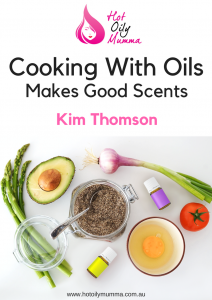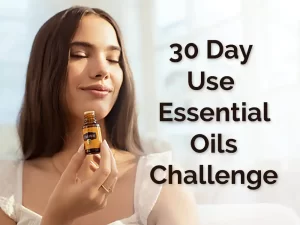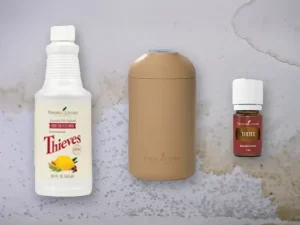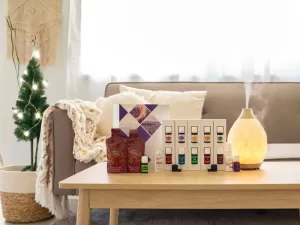Cooking with Essential Oils
Cooking with essential oils can be a touch controversial. I’m often asked which essential oils can be used in cooking? I am going to answer that in a minute but first I want to explain why this topic is controversial.
Essential oils are more potent than dried and fresh herbs. Unlike dried herbs, which lose up to 90% of their healing nutrients and oxygen molecules during the drying process, Young Living Essential Oils do not. Best of all, 100% pure, organic, therapeutic-grade Essential Oils are available through Young Living and can be used in food and drinks.
Being concentrated, an organic, pure therapeutic-grade essential oil contains virtually all of the plants healing nutrients, oxygenating molecules, amino acid precursors, coenzyme A factors, trace minerals, enzymes, vitamins, hormones and more. And because they are concentrated, a properly distilled essential oil is from 50 to 70 times more therapeutically potent than the fresh or dried herbs or plants they are derived from.
Pure therapeutic-grade essential oils have a chemical structure that is similar to human cells and tissues. This makes essential oils compatible with human protein and enables them to be readily identified and accepted by the body.
Cautions about using essential oils in cooking:
The thing is not all essential oils are produced in the same way or for the same purpose. Much of the essential oils produced in the world are for the perfume industry and are not intended to be used in food or drinks. The perfume industry are worried about smell not about the quality or the constituents that are in the essential oil.
Young Living Essential Oils are NOT like the essential oils found online or in health food stores, which are of much lower quality and are NOT suitable for cooking or for dietary purposes. Young Living Essential Oils are superior to all essential oils labeled, Organic 100% Pure. Do NOT substitute another essential oil in the same ways we use Young Living oils as the results could be quite dangerous.
It is extremely important to know the company who is making the essential oil because adulteration is rampant in the industry.
The Number 1 rule for using essential oils in cooking
Rule Number 1: Only use essential oils that are food grade, as not all essential oils are produced to be used in this way or are safe enough to use in cooking.
Use only the essential oils that are labelled for use in food. You really don’t want to risk your health, your gut flora or your liver by using essential oils that have not been produced for this specific purpose.
I often hear of other essential oil companies distributors saying things like “you can ingest our oils” or “our oils are safe for cooking”.
Believe me if it doesn’t say it on the bottle then don’t risk it.
Plus in Australia we don’t use the word ingest when it comes to essential oils, so that should immediately sound alarm bells if you hear people use that word.
Young Living actually have a Culinary range of essential oils. There are 38 of Young Living’s Essential Oils in the Culinary range. They all meet the food labelling laws set out by Food Standards Australia and New Zealand.

Which essential oils can be used for cooking?
Cooking with essential oils brings a whole new level of WoW to your cooking.
There are 38 culinary oils that can be used to add delicious flavour and depth to our kitchen creations.
Organically grown herbs and spices don’t always have good shelf life and often go to waste.
Enjoy all the wonderful benefits without the waste.
You can add them to your beverages, cocktails, smoothies, juices, hot drinks, salad dressings, dips, curries, you name it, the uses are unlimited!
How to use essential oils in cooking
For stronger spice oils such as basil essential oil, cinnamon bark essential oil, marjoram essential oil, nutmeg essential oil, oregano essential oil and thyme essential oil dip a toothpick in a bottle of essential oil and stir it in the recipe after cooking. It is an excellent way to flavour food. Remember, only 2 drops of a Young Living essential oil is equivalent to a full bottle (30mls) of dried herbs.
For a more subtle flavor and/or those smaller portions: remove the inserted plastic dripping cap off the bottle of essential oil and dip a tooth pick into it, then swirl the essential oil dipped tooth pick in your food.
In cooking, your Young Living essential oils should be diluted/mixed in vegetable oil, Blue agave syrup, almond or rice milk prior to ingestion and/or in recipes as this helps to disperse the essential oil more effectively.
Dilution: as a general rule, dilute 1 drop of essential oil in 1 teaspoon of honey or Blue Agave Syrup, or in 60mls of a liquid. (Honey should not be given to children under 2 years of age.)
Add the essential oil right before serving. The heat will evaporate essential oils with the steam. With a few oils that are too strong such as basil essential oil, oregano essential oil and rosemary essential oil simmering will produce a wonderfully subtle bouquet that is wonderful.
To learn more about using essential oils in cooking check out Cooking Up A Storm – Using Essential Oils in Cooking.
The sense of smell is responsible for 90% of our taste so if the food smells great it will taste great too.
Ideas for Cooking With Essential Oils:
Salad Dressings and Dipping Oils:
Basil, clove, dill, fennel, ginger, lavender, lemon, orange, rosemary, spearmint, tarragon & thyme.
Meat Sauces & Rubs:
Basil, dill, fennel, ginger, lemon, lemongrass, marjoram, orange, black pepper, rosemary, mountain savory, sage, tarragon & thyme.
Cakes, frosting, puddings, fruit pies:
Cinnamon Bark, ginger, grapefruit, lavender, lemon, nutmeg, orange, peppermint, rose, spearmint & tangerine.
Pie Crusts:
Use Young Living s V-6 Vegetable Complex Oil to make very flaky crusts.
Herbal Teas:
Chamomile, cinnamon bark, ginger, lavender, lemon, peppermint, rose, spearmint & valerian. Wait until your tea water has cooled enough before adding a drop as this will help retain the beneficial properties/nutrition of the essential oil.
Refreshing Drinks:
Lemon, grapefruit, orange, peppermint, rose, spearmint & tangerine.
Flavoured Honey or Blue Agave:
Basil, chamomile, cinnamon bark, clove, ginger, grapefruit, lavender, lemon, lime, orange, peppermint, rose, spearmint, tangerine. You will need to warm the honey slightly so you can stir in the essential oil.
If you’d like a copy of my ‘Cooking With Oils Makes good Scents’ cookbook,
chock full of awesome recipes click here to grab your FREE copy. It’s my gift to you!












 Subscribe to Hot Oily Mumma
Subscribe to Hot Oily Mumma